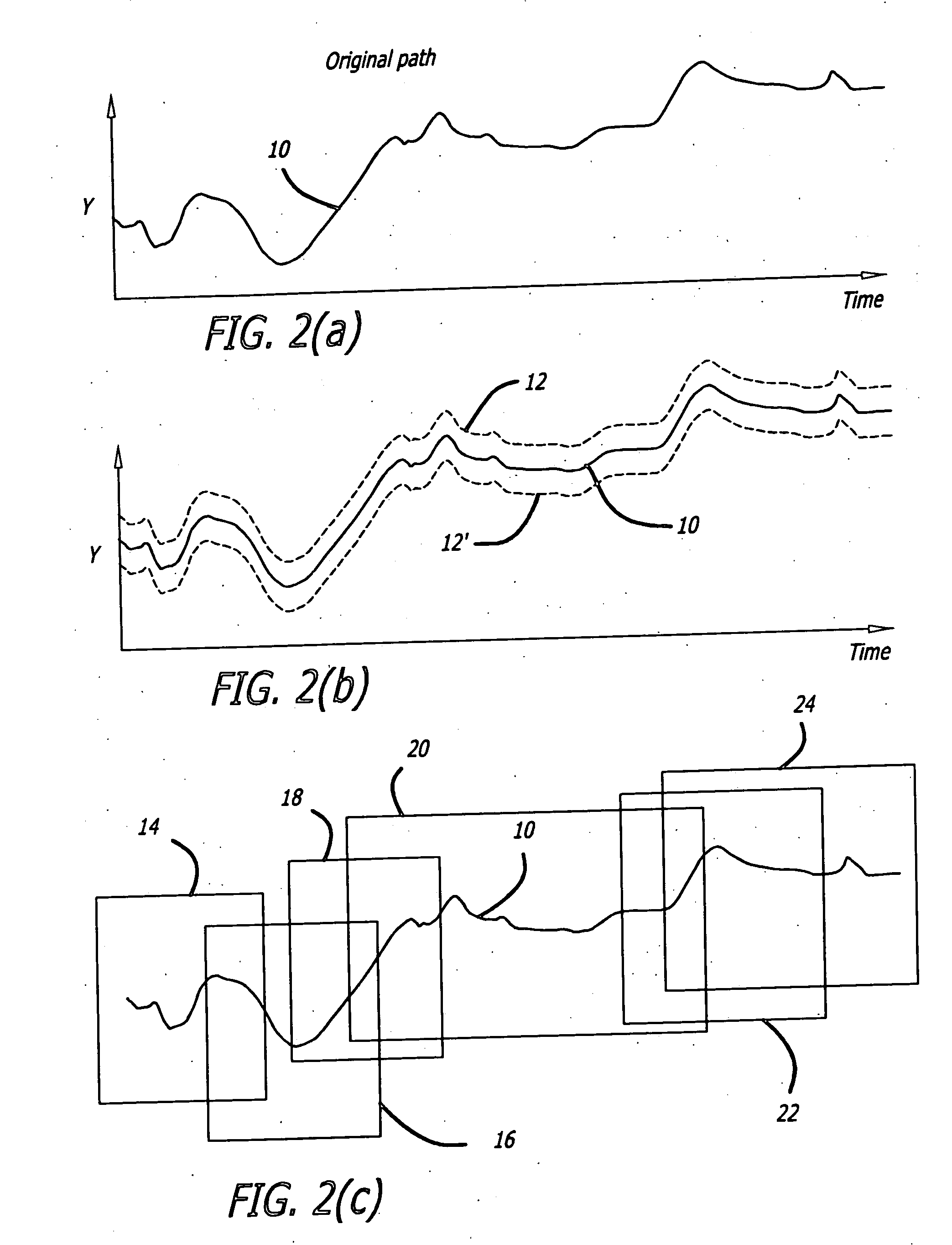Method for image stabilization by adaptive filtering
a technology of adaptive filtering and image stabilization, applied in the field of image sequence stabilization, can solve the problems of “shaky” portions and the creation of blank border areas by techniques that are subject to the creation of often-distracting blank areas
- Summary
- Abstract
- Description
- Claims
- Application Information
AI Technical Summary
Problems solved by technology
Method used
Image
Examples
Embodiment Construction
[0023]FIG. 1 is a flow chart of a method for frame-to-frame image motion stabilization in accordance with an embodiment of the invention. The method employs an adaptive filtering technique to make adjustments to the positions of successive images with respect to frames of uniform dimension. Thereafter, a preselected enlargement or zoom factor is applied to all images, effectively filling the frames with the images to eliminate boundary flicker. As will be seen, by employing an adaptive filtering technique that is integrated with an image shift parameter (related to the zoom factor), the method of the invention attains the benefits of improved image sequence stability and absence of boundary flicker at an acceptable resolution level.
[0024] In discussing the method of the invention with reference to the flow chart of FIG. 1, it is assumed that the effects of undesired camera motion are limited to and measurable by the displacement of a stationary component of the image (e.g. a tree i...
PUM
 Login to View More
Login to View More Abstract
Description
Claims
Application Information
 Login to View More
Login to View More - R&D
- Intellectual Property
- Life Sciences
- Materials
- Tech Scout
- Unparalleled Data Quality
- Higher Quality Content
- 60% Fewer Hallucinations
Browse by: Latest US Patents, China's latest patents, Technical Efficacy Thesaurus, Application Domain, Technology Topic, Popular Technical Reports.
© 2025 PatSnap. All rights reserved.Legal|Privacy policy|Modern Slavery Act Transparency Statement|Sitemap|About US| Contact US: help@patsnap.com



